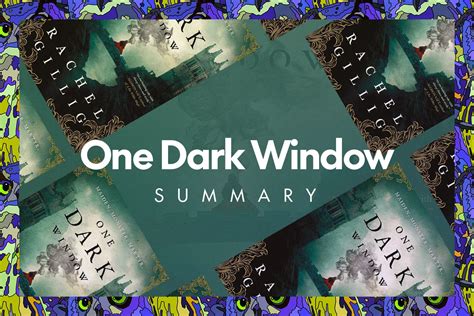How Does One Dark Window End
Ronan Farrow
Apr 04, 2025 · 3 min read

Table of Contents
How Does One Dark Window End? A Deep Dive into Narrative Closure
The ending of a story, particularly one as enigmatic as "One Dark Window," hinges on satisfying several crucial elements: resolution, emotional resonance, and thematic consistency. While there's no single "correct" ending, exploring these aspects can guide us toward compelling conclusions.
Exploring Resolution: Unraveling the Mystery
"One Dark Window" likely presents a mystery – perhaps a crime, a supernatural event, or a personal enigma. A satisfying resolution doesn't necessarily mean a neatly tied-up bow. In fact, ambiguity can be potent. Consider these approaches to ending:
The Unveiling:
-
Direct Revelation: The mystery is explicitly solved. The culprit is revealed, the supernatural explanation is given, or the personal conflict is resolved. This works well if the focus is on the puzzle itself.
-
Implied Revelation: Clues are presented, allowing the reader to deduce the solution. This fosters active engagement and rewards careful reading.
-
Partial Revelation: Only some aspects of the mystery are clarified, leaving room for interpretation and lingering questions. This can create a more profound and memorable experience.
The Shifting Focus:
Sometimes, the "resolution" isn't about solving the initial mystery, but shifting the narrative's focus. The central mystery might remain unsolved, but a new understanding or perspective emerges, providing a sense of closure. This approach can be incredibly effective in exploring themes of acceptance, resilience, or the enduring nature of mystery.
Emotional Resonance: The Weight of the Ending
Beyond the plot, a powerful ending evokes strong emotions in the reader. This emotional resonance connects the reader to the characters and themes, leaving a lasting impact. Consider:
Bittersweet Closure:
Not all endings need to be happy. A bittersweet ending, acknowledging both loss and acceptance, can be particularly impactful. This can involve a character accepting their fate or finding peace amidst sorrow.
Hopeful Ambiguity:
Even if the mystery isn't solved, a glimmer of hope can provide a sense of forward momentum and optimism. This type of ending works particularly well when the story focuses on perseverance or the human spirit's ability to endure.
Catharsis:
The ending should allow the reader to experience a sense of catharsis – a release of tension or emotional buildup. This could involve the protagonist achieving a personal victory, confronting their fears, or finding a measure of inner peace.
Thematic Consistency: Weaving it All Together
A truly compelling ending reflects and reinforces the story's central themes. If the story explores themes of isolation, deception, or the unknown, the ending should resonate with these themes. Avoid introducing new themes abruptly at the end. Instead, use the ending to bring these existing themes to a powerful culmination.
Crafting Your Own Ending for "One Dark Window"
By carefully considering resolution, emotional resonance, and thematic consistency, you can craft an ending that leaves a lasting impression on your readers. Remember that the "best" ending is subjective, but focusing on these key elements will greatly increase the likelihood of creating a truly satisfying and memorable conclusion. Let the unique elements of your "One Dark Window" story dictate the most fitting ending.
Featured Posts
Also read the following articles
| Article Title | Date |
|---|---|
| How Does One Dark Window End | Apr 04, 2025 |
| How Does Santa Go Down The Chimney Book | Apr 04, 2025 |
| How Do I Make My Hot Water Last Longer | Apr 04, 2025 |
| How Does Pay As You Go Electricity Work | Apr 04, 2025 |
| How Do You Cite The Catechism | Apr 04, 2025 |
Latest Posts
-
How Hot Does A Roof Get In The Summer
Apr 04, 2025
-
How Hot Does A Powder Coating Oven Get
Apr 04, 2025
-
How Hot Does A Powder Coat Oven Get
Apr 04, 2025
-
How Hot Does A Harley Engine Get
Apr 04, 2025
-
How Hot Does A 250w Heat Lamp Get
Apr 04, 2025
Thank you for visiting our website which covers about How Does One Dark Window End . We hope the information provided has been useful to you. Feel free to contact us if you have any questions or need further assistance. See you next time and don't miss to bookmark.
